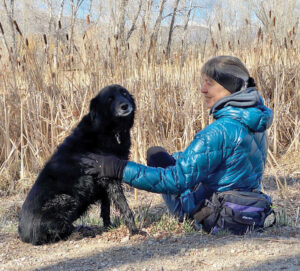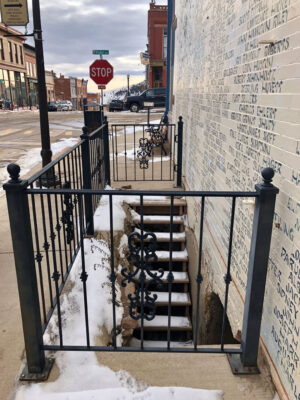By John Mattingly
Everybody knows that The Virus will gut-punch parts of the U.S. economy. Regardless of “what might have been,” the sheer cost of dealing with the disease—as it behaves alternately like a glacier and wildfire across the States—will be considerable. To approach “what next,” consider the parable of the $100 bill.
A banker shows up at a motel asking for a room for the future visit of his mother in law, which he claims will require looking at all the rooms. The motel owner, Jake, gives the banker a master key, for which the banker puts a $100 bill on the counter as security.
Jake realizes the banker will be a while, so he takes the $100 bill and runs to the butcher to pay his $100 meat bill to avoid his restaurant being out of chops. The butcher runs to the slaughterhouse to pay the outstanding $100 carcass bill before losing further credit. The slaughterhouse owner runs to the rancher who is about to go broke. The rancher runs to the grain elevator to pay a past-due grain bill so he can keep his critters from starvation. The elevator owner runs to pay a delinquent $100 gambling bill with a bookie who resides in the motel. The bookie is behind on room payments and dashes to Jake with that same $100 bill, just before the banker returns, only to learn that the banker has found none of the rooms suitable for his mother in law. The banker takes the $100 bill and leaves.
If something about this story seems at once typical, magical, and oddly amiss, it is all of these. It’s typical because money circulates at variable velocities in a community, based on an assumed faith in its value. It’s also magical because the effect of a short term, interest-free loan can settle many more debts than it creates. And finally, it is oddly amiss in that Jake is actually down a $100 even though the bookie no longer owes him.
If the banker had actually taken and paid for the room, the story becomes typical. But Jake took a loan (in this case literally) that he eventually paid with, in a sense, itself. Jake’s account with the butcher is settled, but the $100 debt was simply replaced by a debt to the banker, which had to be paid immediately.
Nevertheless, the $100 loan stimulated the local economy, which helped Jake, in that a supply of meat for the motel restaurant is restored, as is stability of the bookie’s residence. Because the magical effect of interest free loans seems to have immediate positive results for everyone except Jake, why not include him? The banker could leave all or part of the $100 bill as payment for the time Jake held all the rooms open and thus potentially lost business, or the banker could charge 0% interest, like our Federal Reserve.
If we imagine the banker to be a sovereign government with the sole power to print money, then injecting money into the community—if based on fair economic analyses—could have the effect of not only moving the gears of commerce, but building national wealth.
This is Keynsian Economics, a much debated theory, claiming that government spending can, and should, stimulate a nation’s economy with the equivalent of timely short term, no interest loans together with tax reductions when the general economy is slumping, such as was the case with the people in the story, all of whom were on the brink of slowing or losing business.
A prime example of Keynsian theory in practice is what FDR did after the Great Depression. Government spending during a depression on infrastructure such as bridges, dams, levees, communication capability, education and disaster readiness has a remarkable multiplier effect, whereas spending on military ordinance, for example, is a one-off benefit, delivered when the ordinance explodes.
In short, Keynsian theory works well when applied during down times in an economy, even in cases when the resultant spending is for basics like food and rent, such as today during the virus shutdown effects. Keynsian theory, however, does not apply when the economy is growing and healthy. In fact, John M. Keynes stipulated that during good times, government spending should shrink and taxes should go up to pay for, and save for, inevitable and cyclical downturns in the future.
Unfortunately, the U.S. increased government spending and decreased taxes during a protracted growth period in the economy, violating Keynsian theory, and now that government spending is exploding, the possible consequences can be seen in one of the outcomes in the parable of the $100: the part that is amiss: the part about Jake still being down $100. Before long, Jake will have to raise rent on the bookie to make up for the shortfall caused by having to pay back the banker. The bookie in turn has to raise his take a little bit, and the grain elevator owner then has to make a little more money from the operation, raising the price of grain to cover it, and then the rancher has to pay more for grain and the butcher more for the critters. Jake will then has to pay more for restaurant chops. He then raises prices a bit more, and an inflationary cycle is set in motion, ultimately distorting prices, and then asset values throughout the community.
This risk of monetary inflation masking value deflation is why there are questions being asked now about what to include in the rescue money the government is helicoptering into the economy. Even though described as an interest-free, short term loan, the repayment plan has to be increased taxes on a weakening economy, precisely because we spent heavily and cut taxes when the economy was strong.
Next month will look at where there might still be some magic in the money.
John Mattingly cultivates prose, among other things, and was most recently seen near Moffat.
A Farmer Far Afield is sponsored by Cheryl Brown-Kovacic and Larry Kovacic.


